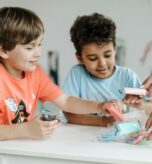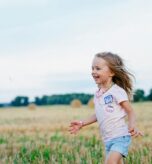Physical activity plays a crucial role in a child’s overall development, impacting their physical, cognitive, social, and emotional well-being. The research underscores the importance of integrating movement into the daily routines of young children, as it fosters lifelong habits that contribute to overall health. This article explores the significance of physical activity in early childhood, the roles of family and educational institutions, and effective strategies to promote active lifestyles among young children.
The Necessity of Daily Physical Activity Children naturally need to move, explore, and interact with their surroundings. According to recommendations, children under the age of eight should engage in at least three hours of varied physical activities daily. This includes light movement, moderate outdoor activities, and vigorous exercise. Unfortunately, research indicates that a significant portion of children do not meet this recommended level of activity. Excessive sedentary behavior, often exacerbated by screen time, limits opportunities for movement and can negatively impact physical and cognitive development. Encouraging active play and reducing prolonged periods of inactivity are crucial for fostering a healthy lifestyle from an early age.
- The Role of Family as a Model for an Active Lifestyle Families play a pivotal role in shaping a child’s attitude toward physical activity. Parents who actively engage in outdoor activities, sports, or movement-based games with their children set an example that promotes a physically active lifestyle. Studies show that children whose parents participate in physical activities tend to be more active themselves. Simple activities such as nature walks, playing tag, or dancing at home can significantly contribute to a child’s daily movement. Moreover, positive reinforcement and encouragement from caregivers enhance children’s motivation to stay active.
- Listening to Children’s Needs and Preferences Empowering children to have a voice in their physical activities is essential for sustained engagement. Children are naturally curious and imaginative, and they often derive joy from self-directed play. Allowing them to choose their preferred activities fosters independence and increases their enthusiasm for movement. Educators and parents should observe children’s interests and provide diverse opportunities for movement that cater to their preferences and developmental stages.
Learning Through Physical Activity Motor skill development is a crucial aspect of early childhood, and active play significantly contributes to refining these skills. Running, jumping, climbing, and ball-handling exercises not only enhance coordination but also support cognitive functions such as problem-solving and spatial awareness. Research highlights a strong correlation between physical activity and academic readiness, as movement stimulates brain function, improving concentration and memory retention. Providing varied movement opportunities helps children develop a wide range of motor skills essential for their growth.
- The Environment as a Catalyst for Movement The physical environment plays a significant role in promoting an active lifestyle. Outdoor settings, such as parks, playgrounds, and natural spaces, provide opportunities for children to engage in unstructured play, fostering creativity and exploration. Urban planning should prioritize accessible and safe play areas that encourage movement. Schools and early childhood education centers should integrate movement-friendly spaces within their facilities to ensure that children remain active throughout the day.
- The Role of Toys and Equipment in Encouraging Movement While children naturally engage in a movement without requiring special equipment, toys, and structured activities can serve as additional motivators. Balls, skipping ropes, bicycles, and climbing structures provide opportunities for skill development and interactive play. Schools and daycare centers should ensure that they have an array of equipment that accommodates different skill levels and abilities. Additionally, making such equipment freely available promotes spontaneous play and experimentation.
Guided Physical Activity and Inclusive Participation Structured physical activity sessions, such as sports programs or movement-based group activities, offer valuable opportunities for skill development and social interaction. However, these activities should be inclusive, ensuring that all children, regardless of ability, can participate and experience success. Educators and coaches should focus on positive reinforcement, allowing children to develop confidence in their physical abilities while fostering a sense of community and cooperation.
Physical Activity in Early Childhood Education and Care Early childhood education programs play a critical role in integrating physical activity into children’s daily routines. Schools and daycare centers should implement structured and unstructured movement sessions that align with developmental needs. Research suggests that children are more active during outdoor free play and guided physical activities with clear rules. Educators should incorporate movement into learning experiences, such as integrating physical games into academic lessons, to enhance engagement and retention.
Community Involvement and Policy Considerations Encouraging a physically active lifestyle calls for collaboration among families, educators, policymakers, and community planners. Municipalities should prioritize developing accessible recreational spaces and safe pedestrian pathways to facilitate active transport options like walking and biking. Furthermore, early childhood policies should stress the significance of physical activity, ensuring that guidelines are adhered to in educational and childcare settings. Political decision-makers must support initiatives that enhance children’s health and well-being through active lifestyle programs.
Conclusion
Physical activity is a crucial element of early childhood development, playing a vital role in promoting physical, cognitive, and emotional growth. Parents, educators, and policymakers need to work together to ensure that children have plenty of opportunities for movement. Creating an environment that encourages active play, inclusivity, and daily movement fosters a generation that values physical well-being. Establishing these habits early in life sets the groundwork for a healthier, more active future.
Source: Joy, play and doing together. Recommendations for physical activity in early childhood. Publications of the Ministry of Education and Culture, Finland.




